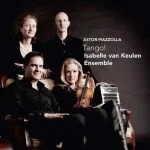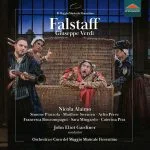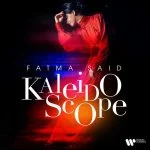

Composer: Astor Piazzolla, Christian Gerber
Performer: Isabelle Van Keulen, Isabelle Van Keulen Ensemble
Orchestra: Deutsche Kammerakademie Neuss
Format: FLAC (tracks)
Label: Berlin Classics
Release: 2022
Size: 662 MB
Recovery: +3%
Scan: cover
01. Tangazo
02. Tres Minutos Con la Realidad
03. Oblivion
04. La Camorra
05. Homenaje a Córdoba
06. Adiós Nonino
07. Soledad
08. Fugata
09. Tangata
For this Piazzolla album, the Dutch violinist Isabelle van Keulen has brought together two different ensembles – her own ensemble specialising in tango nuevo and the Deutsche Kammerakademie Neuss, which she artistically directs. A special chance that allows the music of Astor Piazzolla to be heard in a new way due to its unusual combination of tango ensemble and string orchestra.
In 2011, Isabelle van Keulen founded the “Isabelle van Keulen Ensemble” with bandoneonist Christian Gerber, double bassist Rüdiger Ludwig and pianist Ulrike Payer. Together they have already released several Piazzolla albums and are dedicated to his music. On “Variations on Buenos Aires”, Christian Gerber has made the necessary arrangements. In some pieces, he merely adapted the instrumentation carefully to the tonal and dynamic differentiation possibilities of the large instrumentation; in others, he, who is familiar with Piazzolla’s oeuvre from decades of study, composed counterparts. For example, he added a bandoneon introduction to Oblivion, which has become famous as a film score. Together with the DKN, the musicians give the music a new coat of paint and offer a new, exciting Piazzolla experience.
“The orchestra and ensemble should be equally challenged – neither has an exclusively accompanying function”, Gerber says of his arrangements. “My intention was to create a dialogue”. But it is not only the dialogue between the musicians that is significant. “We want to create a comprehensive result for the audience”, says Isabelle van Keulen, “we draw the emotions of the listeners to us, and equally give off ours. It is precisely this bridge, the communication, that is the exciting thing”.
When the tango was brought to Europe at the beginning of the 20th century, its popularity also increased immensely. In Buenos Aires, hundreds of so-called orquestas típicas played every evening. They consisted of bandoneons, strings and piano and had up to 100 players. The Isabelle van Keulen Ensemble is thus an orquesta típica in essence.
The roughness of the beginnings still characterises the sound of the tango today. Classically trained musicians first have to acquire the appropriate playing techniques. Tangazo, with which this album explores the range of Piazzolla’s sound worlds, begins with a sombre, western-modern sounding introduction. When this turns into a fast-paced section, a ratchet creaks to the dance of the bandoneon and bright whip lashes.
Nevertheless, it can be heard at all times that Piazzolla’s music is not traditional tango. The highly virtuosic interplay in Tres minutos con la realidad with its shifts in emphasis reveals echoes of Stravinsky, and before the solo violin fires off its staccati in dialogue with the strings of the Kammerakademie – it is the only piece without the participation of the tango quartet – the composer allows himself a brief vocal passage of almost ironic sweetness and harmony.
Throughout his life, Piazzolla revered the music of Johann Sebastian Bach. This influence is clearly noticeable in his music, especially on this album in the pieces Soledad and Fugata.



